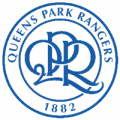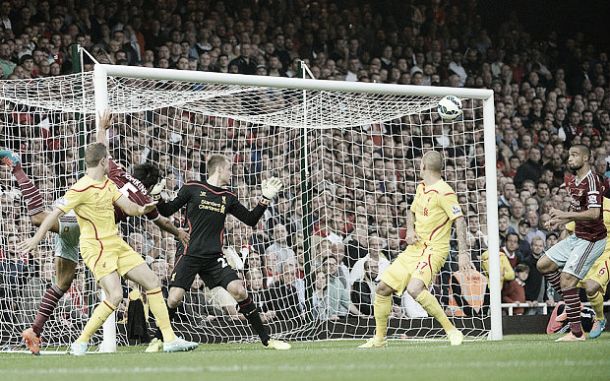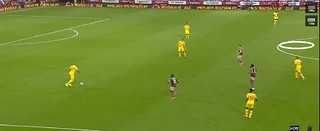Pass and Move the forgotten groove
Over the last 18months and after 20 odd years Liverpool had successfully recovered their title as the most attractive passing side in the country, in the last week however the mantra has been vacant from Liverpool’s play.
What made Liverpool such an attractive and devastating team last season was the ability of the collective to share the ball around with complete trust of each other, make angles and provide penetrating runs beyond the opposition to costless space for teammates.
With the exceptions of the victory away to Spurs and the irrelevant dismantling of Dortmund during the end of pre-season those principles have been absent from Liverpool’s play. The last week in particular has highlighted a need for Liverpool’s forwards and midfielders to get back to the basics of passing and moving.
Raheem Sterling and Philippe Coutinho in particular have been guilty of self-indulgent tactics during games; rather than allowing the ball to do all the work both have chosen to ignore teammates in favour of failed attempts at dribbling through the opposition.
These mannerisms are unbefitting of the coaching that the players have received in recent years and Rodgers must work to refocus the guilty culprits over the coming weeks, the return of Joe Allen and Daniel Sturridge may go some way to helping.
Mignolet form is a cause for concern
Last season’s solution to Pepe Reina’s decline has become this seasons problem, the Belgian stopper looks devoid of confidence and is doing little to help Liverpool’s new defence settle.
Against Aston Villa he provided little resistance on their opening goal, against Ludogorets he made a bizarre error of judgement to allow the Bulgarian outfit a way back into the game and against West Ham his positioning for both of their first half goals was questionable to say the least.
It’s telling that his average saves per goal has more than halved from 1.70 to 0.80 (from Squawka).
His decline is reminiscent to that of Sander Westerveld (albeit at a far more alarming rate), with the possible arrival of Valdes on a costless transfer potentially having a similar affect to that of Dudek 12 years ago.
Sole blame cannot rest on the goalkeeper though and serious questions must be asked about the coaching received from that of John Achterberg. The former Tranmere Rovers keeper was appointed by Rafael Benitez in 2009 to oversee the coaching of the junior keepers at the club however since the departure of Xavi Valero upon the Champions League winning managers unsavoury exit the Dutchman has taken responsibility of being the established coaching figure of Liverpool’s goalkeepers.
Unlike Ochotorena and Valero under Benitez however Achterberg has shown little evidence of ironing out his goalkeeper’s weaknesses and improving on their strengths; Pepe Reina went from one of the best in world football in 2009/10 to an average stopper a year later, whilst Mignolet is no better than he was 18 months ago.
This wouldn’t be the first time that Liverpool’s goalkeepers have come under fire at a time when they are not receiving the necessary coaching to facilitate improvement. From the mid 90’s until the appointment of Benitez and Ochotorena Liverpool went through a number of talented goalkeepers from David James to Dudek -spending tens of millions in the process – with no success.
At the time it was put down to bad luck and poor choices however there have been suggestions over the years that the coaching received from Joe Corrigan at the time did little to correct the flaws in their games. Liverpool and Brendan Rodgers will want to avoid a similar scenario unfolding as it could be detrimental to his Liverpool project coming to fruition.
It’s time to talk about Gerrard – the sequel
Captain fantastic has had a week to forget, and whilst the two defeats and the struggle to overcome Ludogorets at Anfield are by no means his fault he’s still struggled to provide any significant influence on the matches.
Although the switch to his new role as a deep playmaker at the start of the year has been something of a masterstroke his performances over the last week have suggested the opposition have found a way to stifle the club legend.
Pundits and football writers alike have in recent times all rushed to compare Gerrard to that of European and World Cup winning maestro’s Andrea Pirlo and Xabi Alonso, and whilst it’s hard to argue that when given time and space the former England captain can be more than a match for the pair it ignores the other areas in which the Liverpool skipper simple cannot come close to equalling.
Take for example the continuous low intensity runs both Pirlo & Alonso make during the game to create space for themselves to get into positions where they can receive the necessary time and space in which to hurt the opposition. Steven Gerrard simply doesn’t make those runs enough; this is why in games against the likes of West Ham and Aston Villa the opposition only need to have a designated marker for Gerrard to be restricted to playing the game with his back to play or on the half turn.
Gerrard’s lack of movement off the ball as well as his positioning became very noticeable against West Ham when Liverpool switched to a 352 with Gerrard as the deepest of the three central midfielders (the pivot).
In this system the responsibility falls on to the shoulders of the middle central defender to start the build up from the back, this means there is no need for Gerrard to make himself central to the build up in zones 1-3 (using Rodgers’ 8 zone method).
A good example of how to execute such a formation well is that of Juventus under Antonio Conte:
In this phase Bonucci has already laid the ball off to Barzagli while Pirlo has trusted his defenders to conduct the build up; rather than become obsessed and drop to collect he is focused on pushing forward which in turn forces Hamsik to track his run. By doing this he is relieving his defenders (in this case Barzagli) of any pressure that would have come from Insigne or Hamsik had he have dropped to a deeper position.
Contrast that to Gerrard against West Ham after Brendan Rodgers makes the tactical switch from a 442 diamond to a 352 (or a 3142):
What is evident from this screenshot is just how deep Gerrard is during this phase. Instead of taking up a position around where the circle is situated he is dropping into an area which is already sufficiently covered by Dejan Lovren. At this moment (and during many others during the match) he is essentially stepping on the Croats' toes; he has no need to as Lovren has the necessary skillset to do the job Bonucci does for Juventus.
Furthermore by not pushing forward into the open space he is allowing the West Ham attackers to constrict the areas that Liverpool's centrebacks could otherwise push up into.
In many ways the art to playing such a position is the ability to not get involved in play until necessary. This is where Pirlo becomes the fine artist, and Gerrard remains the uncle who can do a bit of DIY. The Italian has the patience to slowly construct his masterpiece whereas the Huyton native Gerrard throws all his colours at the wall and hopes it all works out for the best.
This is not to be overly critical of Gerrard though, the Italian has had two decades of practise to perfect his art, the Liverpool captain has had less than two seasons. It would be completely unfair to expect similar results from his work.
The importance of choosing the games which Gerrard plays becomes all the more important in this case. In situations like that Liverpool faced at the Boleyn Ground it may be better served for a more diminutive midfielder like Joe Allen to play such a role with Gerrard making an impact from the bench.
Welshman Allen may lack his captains ability to hit a 40 yard cross field pass however he possesses better movement and understanding in those positions in front of the defenders to allow Liverpool to have more meaningful possession in the opposition third.
352 is the way to go for now
It was the first time in almost a year that Liverpool utilised the 352 formation against West Ham and it shouldn't be the last.
Rodgers and Liverpool fans have realised very early on that there are no quick fixes to Liverpool's defensive malaise. Mignolet's issues have been mentioned earlier, Martin Skrtel appears to be continuing his trend of a strong season followed by an abysmal season while both Lovren and Sakho have so far been unable to piece together a convincing 90 minute display.
Retaining this formation for the forseeable future would seem logical given the players in Liverpool's squad at the moment; unlike last season Liverpool now have two fullbacks capable of playing as aggressive wingbacks in Moreno and Manquillo. It would allow Rodgers to ease in Balotelli,Markovic and Lallana whilst pushing Sterling and Sturridge into positions where they can best hurt the opposition.
The switch may also offer a reprieve for Kolo Toure who would provide a better option to Martin Skrtel as the right-sided centreback. Using Juventus as an example again -as they are the best exponents of the system- the two wide centrebacks need to offer width on the ball much like traditional fullbacks have in years gone by. Toure still possesses good physical conditioning -he is more mobile than Barzagli at Juventus - and has extensive experience of alternating between right fullback and right centreback during his time at Arsenal.
Despite being involved in high profile errors last season the Ivorian is a more experienced and more commanding presense than that of Skrtel and could provide Lovren and Sakho with the settling presense needed to overcome Liverpool's defencive frailties.












































